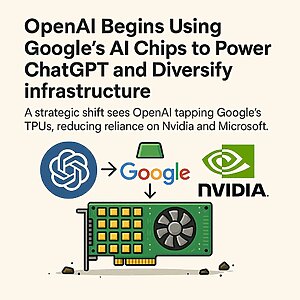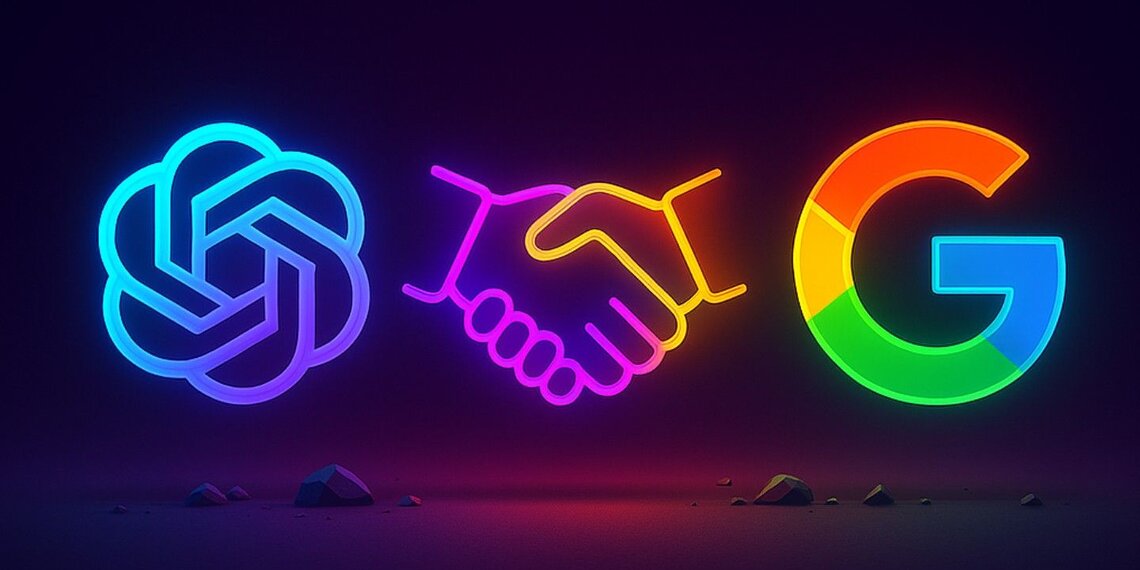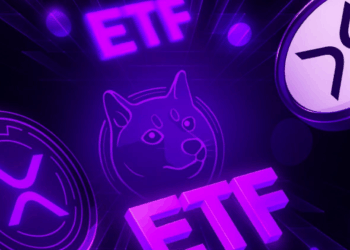In a notable shift within the artificial intelligence landscape, OpenAI has begun renting Google’s custom-designed AI chips to power ChatGPT and its other services. This marks the first significant instance of OpenAI using non-Nvidia hardware, signaling a broader strategy to diversify its computing infrastructure and reduce reliance on long-time partners Nvidia and Microsoft.
OpenAI, the company behind ChatGPT, has historically been one of the largest consumers of Nvidia’s graphics processing units (GPUs), which are essential for both training large language models and performing inference, the process of generating responses based on trained data. However, the growing demand for AI services and the rising costs associated with Nvidia’s GPUs have prompted OpenAI to explore alternative solutions.
According to sources cited by Reuters and The Information, OpenAI is now leveraging Google’s Tensor Processing Units (TPUs), which it accesses via Google Cloud. These chips, developed in-house by Google, were previously reserved for internal use but have recently been made available to external clients. This expansion has already attracted major customers such as Apple and AI startups like Anthropic and Safe Superintelligence, both founded by former OpenAI executives.
The decision to incorporate Google’s TPUs into OpenAI’s infrastructure is driven largely by cost-efficiency. Inference computing, which is required every time a user interacts with ChatGPT, is particularly resource-intensive. By using TPUs, OpenAI aims to lower these operational costs while maintaining performance. However, it’s worth noting that Google is not offering its most advanced TPU models to OpenAI, likely due to competitive concerns. A Google Cloud employee confirmed that the most powerful chips remain reserved for internal projects, including Google’s own Gemini AI models.
This collaboration between two of the most prominent players in the AI space is surprising, given their competitive positioning. OpenAI’s primary backer, Microsoft, has invested billions into the company and provides the bulk of its cloud infrastructure. Meanwhile, Google has been rapidly advancing its own AI ecosystem, integrating its Gemini models across products like Search, Gmail, and Android. Despite this rivalry, the partnership underscores the growing pressure on AI companies to secure scalable and cost-effective compute resources amid a global shortage of high-performance chips.

For Google, onboarding OpenAI as a customer is a strategic win. It not only validates the performance of its TPUs but also strengthens its position in the cloud computing market. The move reflects Google’s broader ambition to commercialize its AI hardware and software stack, turning years of internal development into a competitive advantage in the cloud services sector. The implications of this shift are significant. Nvidia has long dominated the AI chip market, but its GPUs are expensive and increasingly difficult to procure due to surging demand. If OpenAI’s use of TPUs proves successful, it could pave the way for broader adoption of alternative chips, challenging Nvidia’s near-monopoly in the space. It also signals a potential rebalancing of power among the tech giants vying for dominance in the AI era.
While OpenAI has not confirmed whether it will use Google’s chips for training its next-generation models, the current arrangement already represents a meaningful diversification of its infrastructure. As AI workloads continue to grow in complexity and scale, hybrid strategies that combine multiple chip providers and cloud platforms may become the norm.
Neither OpenAI nor Google has publicly commented on the specifics of the deal. However, the move highlights the increasingly fluid alliances in the AI industry, where even fierce competitors may find common ground in the race to build and deploy the most powerful models.










